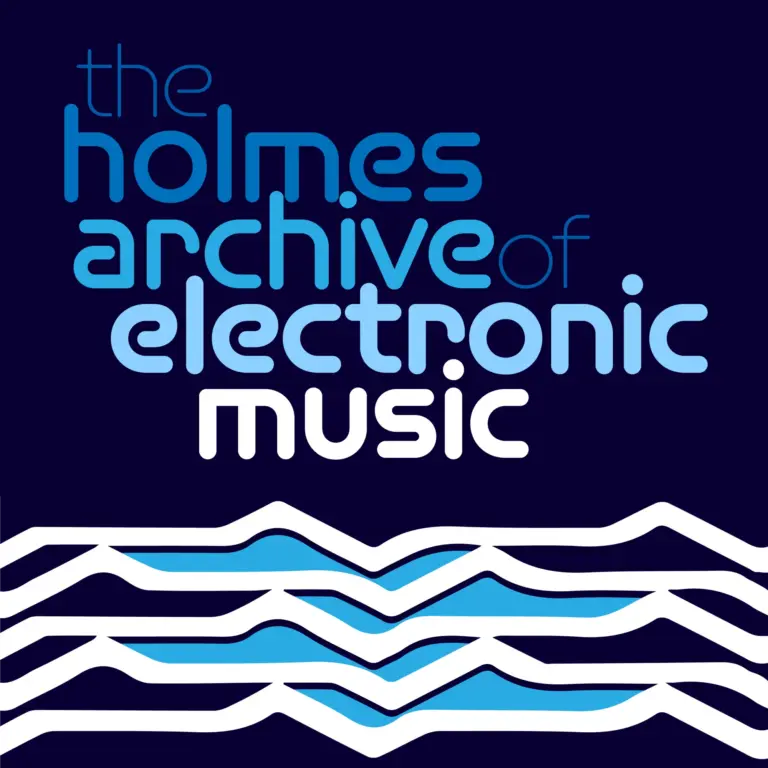
The Holmes Archive of Electronic Music
Chapter 06, Analog and Digital Synthesis Basics, Part 2
Episode 145
Chapter 06, Analog and Digital Synthesis Basics, Part 2. Works Recommended from my book, Electronic and Experimental Music
Welcome to the Archive of Electronic Music. This is Thom Holmes.
This podcast is produced as a companion to my book, Electronic and Experimental Music, published by Routledge. Each of these episodes corresponds to a chapter in the text and an associated list of recommended works, also called Listen in the text. They provide listening examples of vintage electronic works featured in the text.
The works themselves can be enjoyed without the book and I hope that they stand as a chronological survey of important works in the history of electronic music. Be sure to tune-in to other episodes of the podcast where we explore a wide range of electronic music in many styles and genres, all drawn from my archive of vintage recordings.
There is a complete playlist for this episode on the website for the podcast.
Let’s get started with the listening guide to Chapter 06, Analog and Digital Synthesis Basics, Part 2 from my book Electronic and Experimental music.
Playlist: Analog Synthesis and Sound Modification
Time
Track Time
Start
Introduction –Thom Holmes
01:32
00:00
1 Richard Maxfield, “Prelude, Pastoral Symphony” (1960). Tape piece combining electronic sounds with the modulated sounds of nature.
04:02
01:36
2 Mireille Kyrou, “Étude I” (1960) from Musique Concrète (1964 Philips). Tape piece of processed acoustic sounds. Realized by the "Groupe de recherches musicales du Service de la recherche de la radiodiffusion-télévision française.” Kyrou is the rare example of a woman composer using the French studio. 5:09
05:09
05:36
3 Hugh Le Caine, “Safari: Eine kleine Klangfarbenmelodie” (1964). Used extensive additive synthesis and texturing by means of the Sonde, an instrument equipped with 200 closely tuned sine tones.
03:09
10:44
4 David Behrman, “Wave Train” (1966). Used analog circuits, internal feedback, audio processing in real time. Recording is from a flexi-disc released by Source: Music of the Avant Garde in 1968.
15:34
13:52
5 Steve Reich, “Come Out” (1966). Tape piece experiment with tape loops and phasing of vocal passages.
12:53
29:22
6 Gordon Mumma, “Horn” (1967). Performance released on flexi-disc for Aspen Magazine No. 1 (1967). Performed at the Once Festival in Ann Arbor, Michigan by Mumma, Robert Ashley, and George Cacioppo. Acoustic sounds modified electronically in real time.
06:22
42:14
7 Pril Smiley, “Eclipse” (1967). “Eclipse” was realized at the Columbia-Princeton Electronic Music Center. Smiley had this to say about the work, “Eighty-five percent of the sounds are electronic in origin; the non-electronic sounds are mainly pre-recorded percussion sounds–but subsequently electronically modified so that they are not always recognizable.” 7:56
07:56
48:46
8 Charlemagne Palestine, “Seven Organism Study” (1968). Used feedback and analog synthesis for this drone work.
07:53
56:36
9 Hugh Davies, “Salad” (1977). From the National Sound Archive of The British Library. The file was produced in Davies’ home studio and dates from February 19, 1977. Davies performs on four different egg slicers, two tomato slicers and one cheese slicer. 13:55
13:55
01:04:24
10 David Lee Myers, “Periodicity, track A1” (1988). Analog feedback circuits controlled in real time.
02:36
01:18:16
Additional opening, closing, and other incidental music by Thom Holmes.
My Books/eBooks: Electronic and Experimental Music, sixth edition, Routledge 2020. Also, Sound Art: Concepts and Practices, first edition, Routledge 2022.
See my companion blog that I write for the Bob Moog Foundation.
For a transcript, please see my blog, Noise and Notations.
Original music by Thom Holmes can be found on iTunes and Bandcamp.